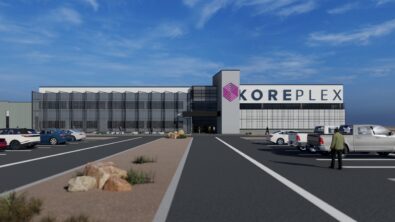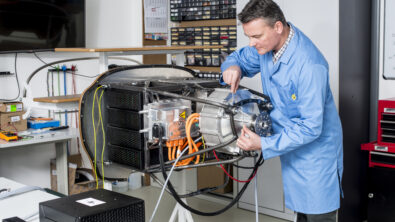Solving sustainable buildings with MBSE

Making our built environment more sustainable is one of the most important tasks in the coming decades to avoid further pollution to our atmosphere. A major contributor our comfort in the built environment comes in the form of climate control, it accounts for about 3.6 billion tonnes of greenhouse gas emissions every year. Reducing, and hopefully eliminating, this environmental cost boils down the two technological hurdles. First is to improve the efficiency of thermal diffusion – the heating or cooling of the indoor environment – by increasing the coefficient of performance (COP) or the ratio of energy required to heat/cool a volume. The second is to improve the insulation factor to ensure the energy used to cool or heat the space does not easily escape. Unfortunately, the diversity of housing and the regulations thereof can make successfully greening these building exceedingly cumbersome.
By utilizing a model-based systems engineering (MBSE) framework, with sustainability as a project requirement, the process can be streamlined and organized into a viable opportunity around the world. To understand the impact, we will discuss the role of more efficient climate control and navigating regulatory hurdles to tackle large-scale projects for sustainability in the built environment.
Making climate efficient
Climate control in the United States is a complex problem. Not only is there a wide range in form factors needed to cover buildings from rural to dense urban regions, but there is also the outdoor climate variability to contend with. The needs of an apartment in Miami are very different from a single-family home in Spokane. Really the only common thread across the spectrum is that existing infrastructure cannot easily manage the highest highs and the lowest lows efficiently. A common technology brought up to manage changing climate requirements is the heat pump, which are essentially air conditioners that work in both directions to heat or cool a space. These can transition heating needs to electricity by drastically improving the COP compared to resistive heaters – baseboard heading or electric radiators – but air-source varieties become less efficient during extremely weather conditions because they are moving heat energy against the natural flow.
The other option is to increase the insulative capabilities of the building to keep a comfortable internal temperature with less energy input. Insulation for buildings is most easily addressed during construction as it is often an in-fill to the walls of the building, but it can also be improved with better windows. Single-glaze or single pane windows are not particularly common today, but some older buildings still use them. And this is often the primary pathway for heat transfer into or out of a building. Double and triple-glaze windows are becoming the standard for building construction and renovations. But triple-glazed windows are only effective when the rest of the building is well insulated, meaning brick walled structures and similar construction can negate the insulative effects without addressing this heat transfer path. There are businesses developing external insulation for older buildings, but the cost is still high and will need to be balanced against any other project requirements.
An MBSE approach establishes a framework to weigh these decisions against the requirements of the project. For cost, it may be more effective to use highly efficient heat pumps and new windows due to the investment price of exterior insulation. But it a colder environment the higher cost of heating, in dollars or CO2 emissions from electricity usage may push a project to invest in a higher upfront cost solution to save on recurring costs.
Regulatory requirements
A perfectly balanced solution must also consider the regulatory body overseeing the project. Infrastructure can be more complex than other products, because it often hinges on a very diverse set of regulations. In the United States, building codes are defined at a state and even local level, making many projects more tailored than an aircraft, for instance, where there is a national regulatory body – the Federal Aviation Authority (FAA). Rather than harnessing the complexity of an individual product as an MBSE approach does for aviation, in infrastructure, MBSE harnesses the complexity of the market. Instead of starting a new building or renovation from scratch if there is a new set of building codes, a project backed by MBSE can evaluate where changes are required to adhere to the new set of requirements. In the example of external insulation, this may interfere with building set-back requirements in an urban environment. And in rural or suburban areas there may be utility requirements, like water, electricity, or gas that need to be considered since they may not have direct access to municipal resources.
In an MBSE approach, these requirements become another axis to finding an optimized product. And it can be of great benefit when revitalizing the built environment on such a grand scale. If a more expensive solution is needed in one region due to a regulatory conflict, using a different solution where it is not needed reduces the overall market demand, meaning faster development and lower costs as an average or market-level point of view. It also saves money on projects by fitting the product to the requirements, unless the business is built around mass-production and relies on the efficiencies of scale, by using the lowest cost solution for a project while still meeting all other requirements.
Solving sustainable housing
There is no one solution to sustainable buildings and it will require a concrete understanding of the needs at an individual level in many situations. MBSE provides the framework to make the optimal decision, whether it is a brand-new building or an existing one the needs critical updates to extend its usable life. There are so many different optimizations possible, due to the diversity of housing. There are many types of optimizations that I couldn’t cover here – is there a point where it is more effective to tear down and rebuild on new standards rather than update existing buildings? Or with the heat pump problem, is it more cost effective to use a back-up climate solution for the extreme temperatures, or install a more intrusive and expensive ground-source system that relies on a constant temperature in the earth? With the right data any of these questions can be solved and as more information is learned it becomes even easier in a digital environment as reuse is encouraged. If you’d like to learn more about how these problems are being solved today there is a great article from MIT Technology Review. Or if you’d like to learn about the electrification of climate control there is a great paper from Stephen Fergusson of Siemens’ Simcenter.
Siemens Digital Industries Software is driving transformation to enable a digital enterprise where engineering, manufacturing and electronics design meet tomorrow. Xcelerator, the comprehensive and integrated portfolio of software and services from Siemens Digital Industries Software, helps companies of all sizes create and leverage a comprehensive digital twin that provides organizations with new insights, opportunities and levels of automation to drive innovation.
For more information on Siemens Digital Industries Software products and services, visit siemens.com/software or follow us on LinkedIn, Twitter, Facebook and Instagram.
Siemens Digital Industries Software – Where today meets tomorrow


